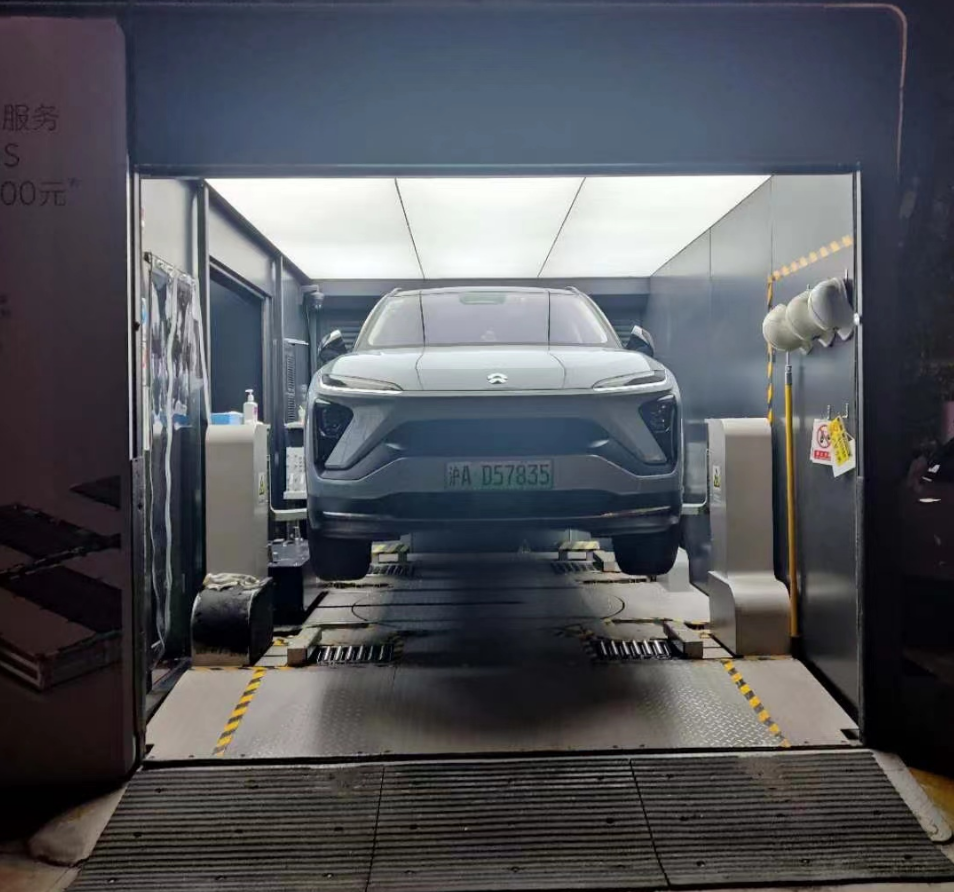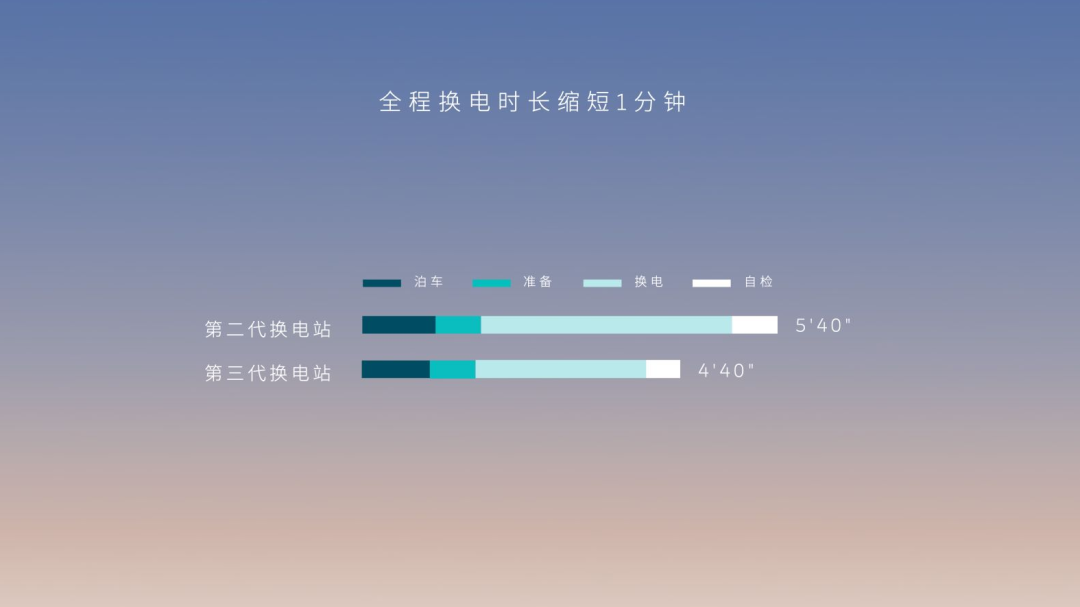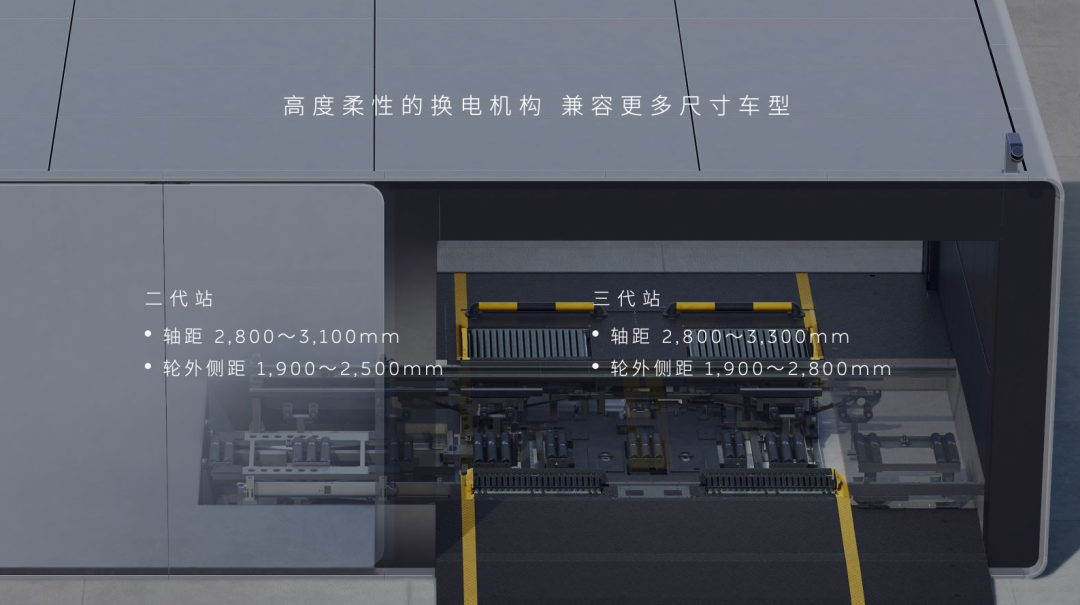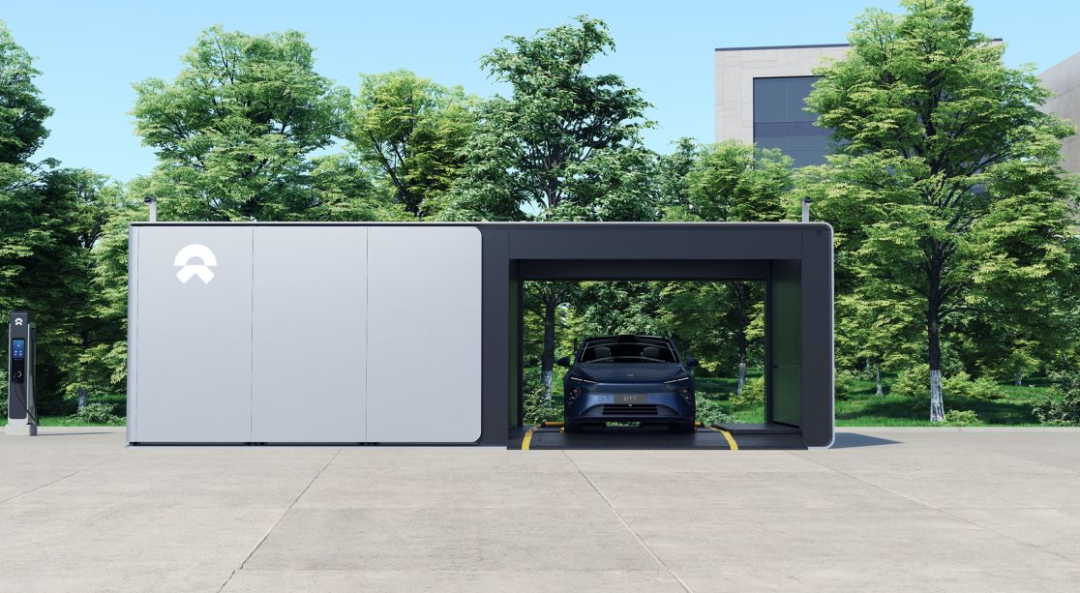Author: Zhang Tao
Just yesterday, NIO’s third-generation battery swapping station officially started trial operation. As one of the first users to experience it, I would like to share my experience in using this generation of products with you.
Improved Battery Swapping Efficiency
My first NIO battery swapping experience was in 2020. At that time, it took about 30 minutes from waiting for my turn to completing the battery swap at the first-generation battery swapping station. The battery swapping process itself took about seven to eight minutes, during which I had to get off the car and wait for the staff to complete the swap.
It was not a great experience, as it was in the winter night and I had to queue and wait for the whole process. Moreover, the overall time consumption was not much faster than using fast charging.

Starting from the second-generation battery swapping station, I could use the automatic parking function to drive the car into the station, and the battery swapping process could be completed automatically by operating on the car. Moreover, from the second-generation station, the entire car did not need to be lifted up, which greatly increased the speed of the battery swap.
The overall process of the third-generation station is not much different from the second-generation battery swapping station, but the speed of the battery swapping process can still be clearly felt to be faster.
NIO’s battery swapping process has four steps: parking, preparation, battery swapping, and self-check. The completion time for all of them at the second-generation battery swapping station was about 5 minutes and 40 seconds, among which the battery swapping and self-checking process took up about 70% of the total time.
 ## The Third-Generation Battery Swap Stations
## The Third-Generation Battery Swap Stations
The third-generation battery swap stations have adopted a brand new three-station collaborative operation mechanism, in which the battery swapping and partial self-inspection actions can be carried out synchronously, reducing the overall swapping time by one minute. From the video, we can also see that apart from the parking time, the entire swapping process takes less than 3 minutes.
The previously faster EVGO battery swap station had a speed of 1 minute to swap a chocolate battery pack, but the individual pack capacity was only 26.5 kWh. NIO’s highest-capacity battery pack for battery swapping is 100 kWh, and with swapping a battery with the same capacity, the swapping speed of the third-generation battery swap station has already exceeded that of EVGO’s.
Increased Battery Reserves
As mentioned before, the first-time experience of battery swapping took a relatively long time due to the shortage of reserves in the first-generation battery swap stations. Even if batteries were swapped at night, there were still cases of insufficient reserves.
By the second-generation of battery swap stations, the number of battery reserves increased to 13 packs, while the third-generation has increased to 21 packs. Additionally, each third-generation battery swap station will allocate the number of 75-degree and 100-degree battery packs according to the surrounding NIO users, and may even allocate 150-degree battery packs in the future.
Moreover, NIO supports cross-level battery swapping, meaning 75-degree battery packs can be swapped for 100-degree battery packs. So, each swap station will ensure a minimum stock of 100-degree battery packs to ensure that users can swap them.
Increased Battery Charging Power and Integration of Charging and Swapping Stations
At last year’s NIO Day, NIO announced the launch of their own 500 kW ultrafast charging stations, which can finally be experienced now.
An ET5 equipped with a 75 kWh battery pack starts charging at 13% of capacity and can peak at 143 kW, while the NIO ES8, built on the NT1.0 platform with a 100 kWh battery pack, can reach a maximum charging power of 90 kW.
What’s even more surprising is that NIO’s upcoming energy replenishment system will heavily promote a combination of battery swap and charging stations. Depending on the approved power capacity in different regions, NIO can flexibly combine 500 kW ultrafast charging stations and 200 kW fast charging stations.## Installation of More Compatible LIDAR Sensors
NIO has equipped its third-generation stations with two LIDAR sensors and two Nvidia Orin X chips, giving a single station a computing power of up to 508TOPS. This configuration surpasses that of most vehicles on the market today.
Starting from the second-generation stations, NIO’s battery swapping already used automatic parking and swapping. The addition of LIDAR sensors now primarily enhances interaction with low-computing-power vehicles, thereby increasing the success rate of automatic parking and shortening the entire battery swapping process.
For example, the computing power of the first-generation NIO ES8 is relatively low. However, after interacting with the LIDAR sensors of the third-generation stations, the ES8 can have a battery swapping experience comparable to that of the ET5 and ES7. NIO also considers this measure as saving on labor costs for operations.
Furthermore, the design of the third-generation stations is basically identical to that of the second-generation stations, and the vehicles do not need to be lifted to complete battery swapping. The platform height of the third-generation station is lowered by 100mm, and the battery swapping location has moved forward by 400mm. The third-generation connectors can also support more vehicle sizes, such as wheelbases ranging from 2800 to 3300mm and outer wheel spreads ranging from 1900 to 2800mm, which is more extensive than the range supported by the second-generation stations.
This is partly to accommodate the Alp project vehicle models and possibly to prepare for NIO’s “Maybach” vehicle models as well.

Construction of 1000 Stations in 2023, Reduced Per-Swap Cost
In the previous plan, NIO planned to build 400 battery swapping stations this year, which increased to 1000 after the Spring Festival. The primary reason is that the Spring Festival saw an explosion in battery swapping demand, with up to 62,000 swaps conducted daily.
Half of NIO’s customers use battery swapping as their primary method for charging, and this proportion is still increasing. NIO’s sales are also on the rise, and the earlier plan of 400 stations cannot keep pace with their usage. Therefore, in its latest plan, 90% of the 1000 new battery swapping stations NIO will build this year (i.e., 400 for highways, 600 for urban areas) will be third-generation stations.It is worth mentioning that the second-generation battery swapping stations can be upgraded to the third-generation stations. During an interview, Shen Fei mentioned that the upgrade of the second-generation battery swapping stations to the third-generation does not bring significant benefits, as the construction speed of the third-generation stations is faster, and it is unnecessary to upgrade the second-generation stations.
If we look at the cost, the cost of the third-generation battery swapping stations is not lower than that of the second-generation stations. This is because laser rangefinders and Nvidia chips are added, and the battery capacity is increased significantly.
Shen Fei also introduced that the overall cost of the third-generation is not reduced, but the cost per single cell actually drops by 30%.
In addition, the third-generation stations can provide deeper interaction with the power grid, and the logic is that the power grid should provide revenue. Moreover, the battery swapping station can shift peak charging, increasing power during periods of low electricity prices and decreasing power during high prices, saving more than 17 million yuan through peak shifting in 2022.
Conclusion
A simple understanding of the third-generation battery swapping stations will reveal that NIO has been leading the trend since being the first to initiate battery swapping. Their progress and foresight are evident. The participation of Feelfine, Reblue, and CATL has also made NIO no longer alone in the field. However, the real spring of new energy will be brought about by interconnecting the battery swapping system of various brands.
This article is a translation by ChatGPT of a Chinese report from 42HOW. If you have any questions about it, please email bd@42how.com.
